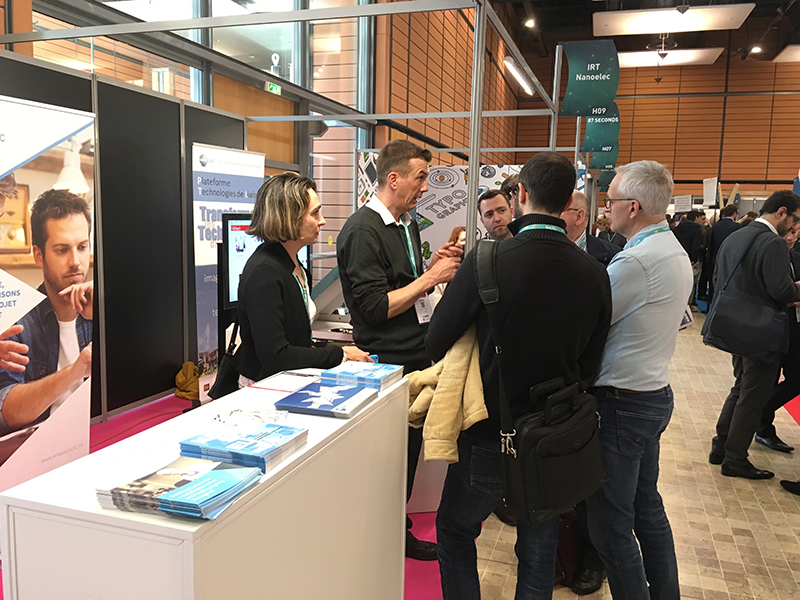
For the second year in a row, IRT Nanoelec attended SIdO, a major IoT trade show held in Lyon on April 4 and 5.
SIdO is like France’s very own CES, with more than 350 exhibitors, 6,900 industry professionals, more than 7,500 visitors, and more than 200 startups promoting their IoT solutions for all markets.
The IRT Nanoelec exhibit booth showcased three demonstrator systems presented in cooperation with partners:
- Claps Morpho (cybersecurity): recovery/ extraction of an AES algorithm key by listening to the electromagnetic waves of a ST32 circuit.
The purpose of this demonstrator is to raise the IoT community’s awareness of cybersecurity risks, and, in particular, physical attacks on integrated circuits. The demo illustrated how an AES encryption key—one of the most robust currently in use—can be recovered by measuring the electromagnetic field emitted by an integrated circuit.
- The Terradona smart recycling bin.
Terradona’s unique recognition system immediately identifies the materials placed in a recycling bin. The system was developed to improve the sorting of recyclables by encouraging users with a reward for correctly-sorted waste. A universal sensor identifies, counts, and estimates the volume of waste recycled—data that is used to make waste management more efficient. The system is already in use in Monaco and Grasse (in the South of France).
- A video on the Hub Energy project in partnership with Schneider Electric.
The purpose of the Hub Energy project (being run under the IRT Nanoelec PULSE program) is to build a secure, connected energy management system that can be used in a variety of situations.
A prototype bidirectional battery charger was designed in cooperation with Schneider Electric and IES, a France-based small business enterprise that designs power electronics for electric vehicles. A total of fifteen circuit boards with SiC components for achieving a high-performance AC/DC and DC/DC conversion architecture were developed for the charger. The conversion yields were 96.3% (AC/DC) and 97.7% (DC/DC), for an overall yield of 94%. A 20 kWh prototype has been installed at the IRT Nanoelec platform. Several prospective customers have already expressed interest in the technology.
An electric vehicle connected to Hub Energy can either use the grid to charge or inject energy from its batteries into the grid—supporting the development of smart grids.
Over the two days IRT Nanoelec brought home a number of leads that could result in joint R&D projects with new partners.




